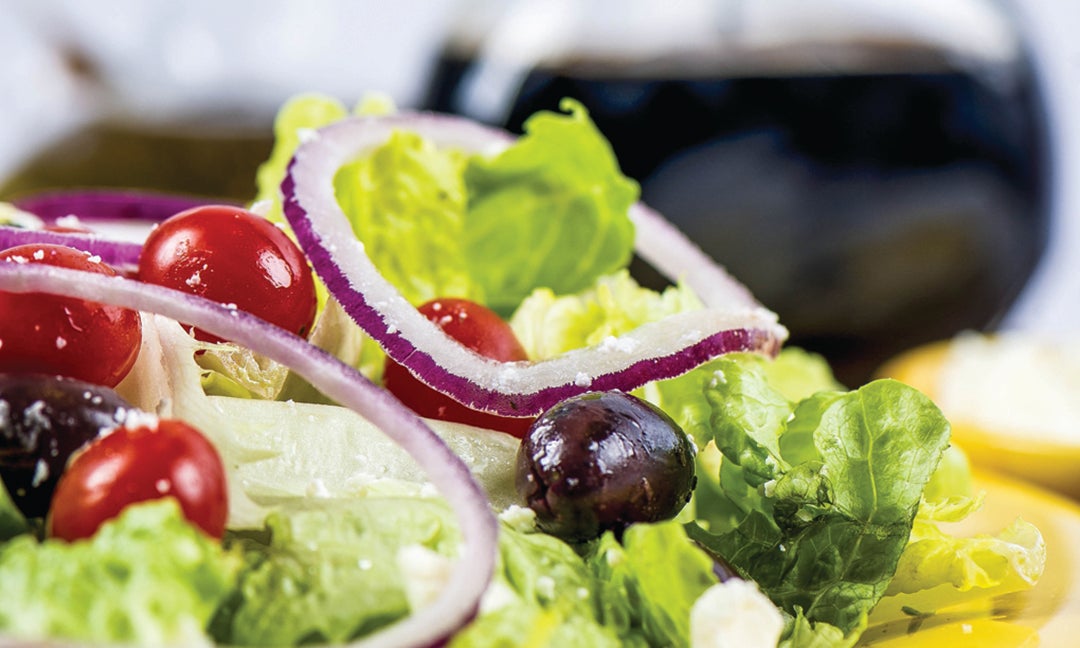More than just a resolution: The Mediterranean way of eating
Published 8:40 am Friday, February 5, 2021
|
Getting your Trinity Audio player ready...
|
Contributed by Dee Furlough, Family & Consumer Sciences Extension Agent with Dare and Tyrrell counties.
New Year’s always seems to bring lots of resolutions that focus on health – quit smoking, drink more water, exercise regularly and the famous eat healthy/lose weight. Television, magazines and Facebook are especially full of advice at this time of year. But how much of that information is research-based and scientifically proven? We all know fad diets aren’t good in the long-run, but what is?
Have you heard of the Mediterranean way of eating? It has been researched since the 1960s and has been proven to be a diet associated with reduced risk factors for cardiovascular disease. It is one of the healthy eating plans recommended by the Dietary Guidelines for Americans and recognized by the World Health Organization as a healthy and sustainable eating pattern.
The Mediterranean-style eating pattern incorporates the basics of healthy eating that are traditionally practiced in countries that border the Mediterranean Sea. It is high in vegetables, fruits, whole grains, beans, nuts, seeds and olive oil. Fish, other seafood and poultry are the primary sources of meat, with red meat eaten only occasionally. Other features of the Med way of eating are slowing down to enjoy (safe) meals with family and friends, being physically active and even enjoying a glass of red wine!
If you’d like to get started eating the Med way, here are some tips:
– Get at least five servings of vegetables and fruits each day. Choose a variety of colors and eat more of the dark green, leafy vegetables such as collards, kale, spinach and turnip greens.
– Eat primarily plant-based foods. Replace red meat with plant-based proteins such as beans and legumes often.
– Choose whole-grain foods such as oatmeal, quinoa, brown rice and popcorn. When choosing bread and pasta, look for “whole” in the first ingredient on the ingredient list.
– Choose at least three ounces of nuts and seeds each week, while keeping within your calorie budget. Avoid candied, honey-roasted and heavily salted nuts and seeds.
– Choose olive oil. Replace solid fats like butter and margarine and other oils with olive oil. Use olive oil for cooking, in dressings and marinades. Aim to consume at least four tablespoons each day, while keeping within your calorie budget.
– Use herbs and spices instead of salt to flavor foods.
– Eat seafood at least three times each week. Include fatty fish, such as mackerel and salmon. Avoid fried fish. Eat white-meat poultry, such as turkey and chicken at least twice a week.
– Be physically active. Aim for at least 150 minutes per week or 30 minutes per day.
– Optional: drink red wine in moderation. No more than five ounces of wine a day for women of all ages and men older than 65 and no more than 10 ounces of wine a day for younger men.
“Med Instead of Meds” is an eight-week program created by a group of nutrition and health professionals from NC State University and NC Division of Public Health. Eating the Med Way has been proven to protect against chronic illness. In some cases, eating the Med Way may even result in decreasing medications taken for blood pressure, high cholesterol or diabetes. Hence the name Med Instead of Meds.
For lots of great information and Med recipes, go to medinsteadofmeds.com. You can also contact your North Carolina Family and Consumer Sciences Extension agent: Dare and Tyrrell – dee_furlough@ncsu.edu, Currituck and Camden – olivia_jones@ncsu.edu and Hyde – catiejo_black@ncsu.edu.
Basil, Shrimp and Tomato Pasta with Feta
This dish is very versatile and can be made with any vegetables or proteins that you have on hand. The fresh basil and feta are the superstars in this dish.
Serves 6
Serving Size: ¾ cup
Prep Time: 20 minutes
Cook Time: 20 minutes
Total Time: 40 minutes
Ingredients:
- 1 pound whole-wheat penne pasta
- 2 tablespoons olive oil
- 1 pound shrimp, deveined, shells and tails removed
- 3 tablespoons chopped fresh basil
- 2 pints grape tomatoes, cut in half
- 4 ounces (approximately ¾ cup) low-fat feta cheese
Directions:
- Cook pasta as directed.
- While pasta is cooking, heat skillet over medium-high heat. Add olive oil to pan.
- Sauté shrimp in olive oil until pink.
- Add basil and grape tomatoes and sauté for additional two minutes until slightly wilted. Turn off heat.
- Add feta and stir.
- Serve shrimp, basil, tomatoes, and feta over whole wheat pasta.
Nutrition Information per Serving:
- Serving Size: ¾ cup
- Vegetables: ½ cup
- Fruits: 0 cups
- Calories: 428 calories
- Carbohydrates: 60 grams
- Fiber: 10.5 grams
- Protein: 30 grams
- Fat: 10 grams
- Sodium: 552 mg
READ ABOUT MORE NEWS AND EVENTS HERE.
RECENT HEADLINES:
First phase of Food Bank of the Albemarle facility expansion complete





